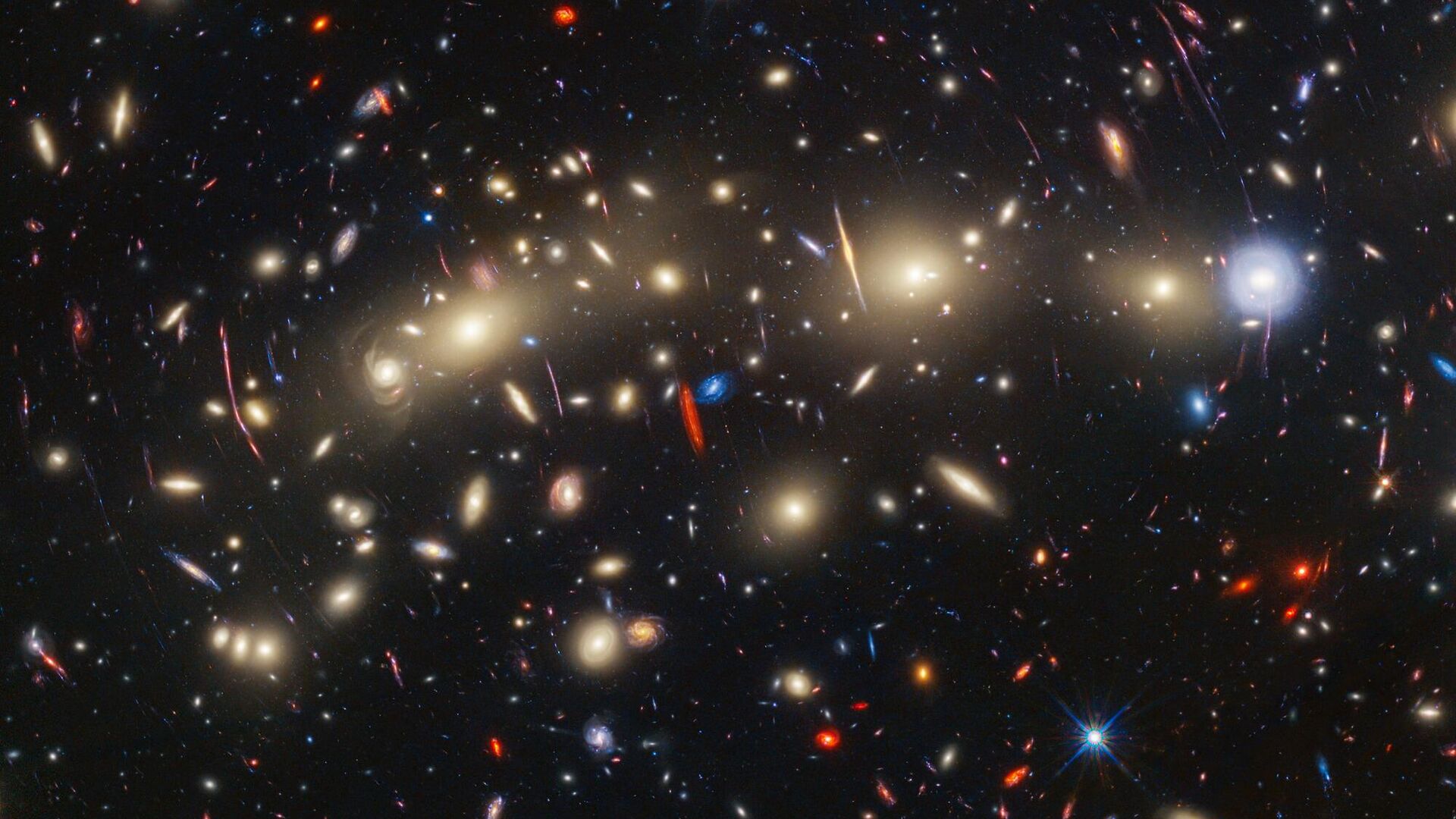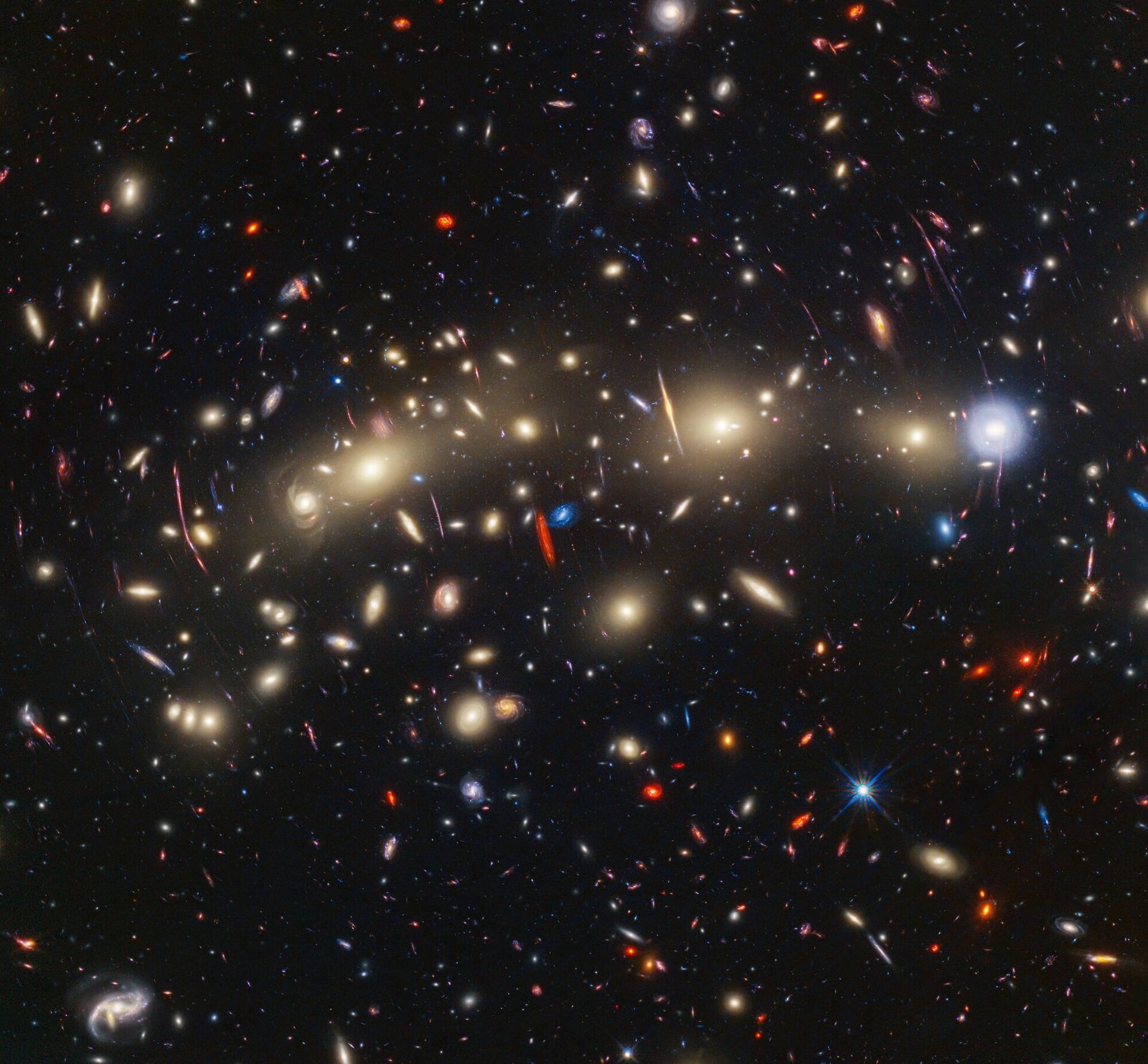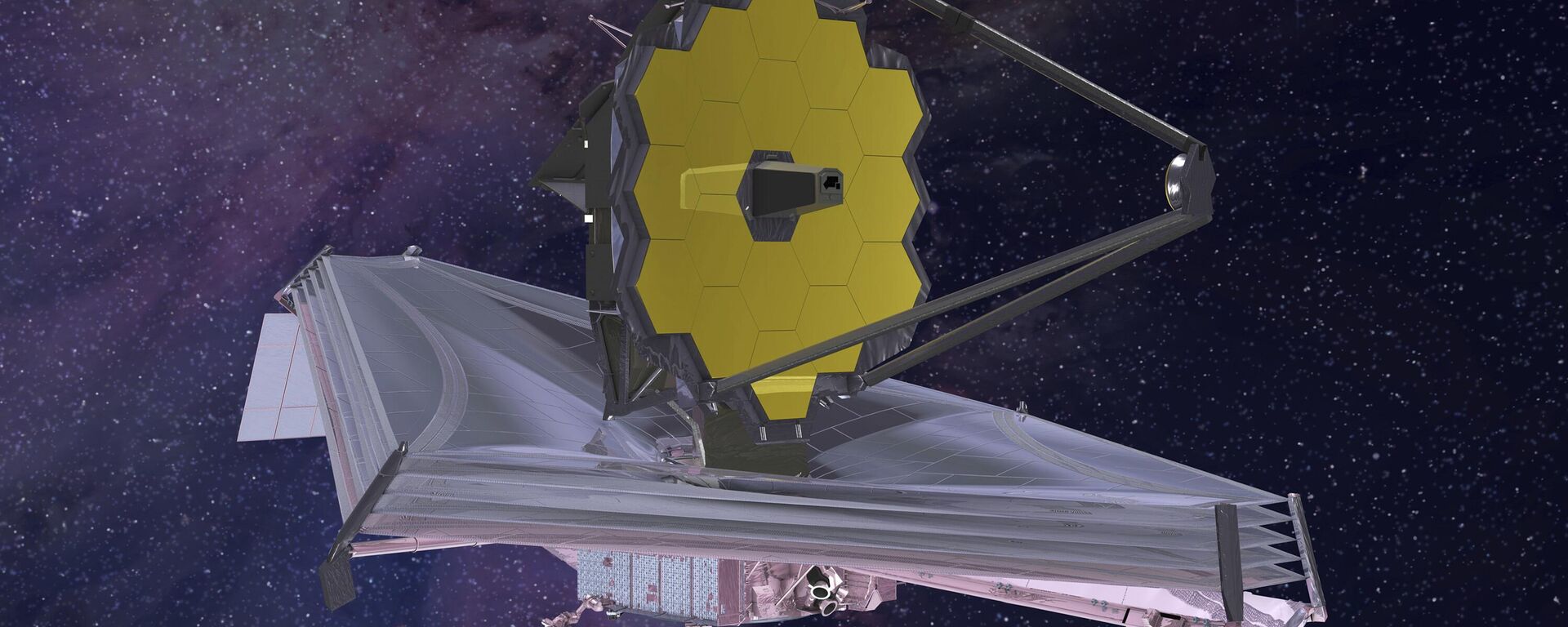Photo: Webb, Hubble Telescopes Join Forces to Make Panchromatic Image of Galaxy Cluster

© NASA
Subscribe
Two of mankind’s most powerful space telescopes ever made have combined their abilities to make an incredible panchromatic image of a distant galaxy cluster.
The image was released by the US space agency NASA on Thursday, and the first of two papers borne of the research process was published in Astronomy & Astrophysics, a peer-reviewed journal, this month. The other has been accepted for publication in The Astrophysical Journal and uploaded to the arXiv preprint server.
Both the James Webb Space Telescope and Hubble Space Telescope sit in Earth orbit, where the planet’s atmosphere cannot distort their views of the universe, yielding incredible detail.
Although the JWST is intended to be the Hubble’s successor, the two telescopes have slightly different abilities, which they combined by focusing on a distant galaxy cluster known as MACS0416 that is 4.3 billion light-years away.

This image of galaxy cluster MACS0416 highlights one particular gravitationally lensed background galaxy, which existed about 3 billion years after the big bang. That galaxy contains a transient, or object that varies in observed brightness over time, that the science team nicknamed “Mothra.” Mothra is a star that is magnified by a factor of at least 4,000 times. The team believes that Mothra is magnified not only by the gravity of galaxy cluster MACS0416, but also by an object known as a “milli-lens” that likely weighs about as much as a globular star cluster.
© NASA
The colors tells the stories of the objects the two telescopes perceived: the blue galaxies are closer and very actively producing new stars, which Hubble was better at observing, while the red galaxies were further away and contain “copious” amounts of cosmic dust, NASA said, which the Webb telescope was designed to better observe.
The two galaxies in the image are seen in the middle of a collision that will eventually yield a single, larger cluster.
“The image reveals a wealth of details that are only possible to capture by combining the power of both space telescopes,” NASA said in a news release. “It includes a bounty of galaxies outside the cluster and a sprinkling of sources that vary over time, likely due to gravitational lensing – the distortion and amplification of light from distant background sources.”
The choice of MACS0416 was no accident: the astronomers were on the hunt for optical transients, or interstellar objects that are observed to vary significantly in their brightness over time. The objects are both confusing and elusive, with only a handful discovered over the last few years. However, they found 14 more with their panchromatic study of MACS0416.
"We're calling MACS0416 the Christmas Tree Galaxy Cluster, both because it's so colorful and because of these flickering lights we find within it. We can see transients everywhere," said Haojing Yan of the University of Missouri in Columbia, lead author of one of the papers.
The astronomers believe that 12 of the 14 optical transients are located in galaxies highly magnified by gravitational lensing, or the bending of light by the gravity created by high concentrations of mass. The other two are located in galaxies with less distortion and are probably supernovas, officials said.




